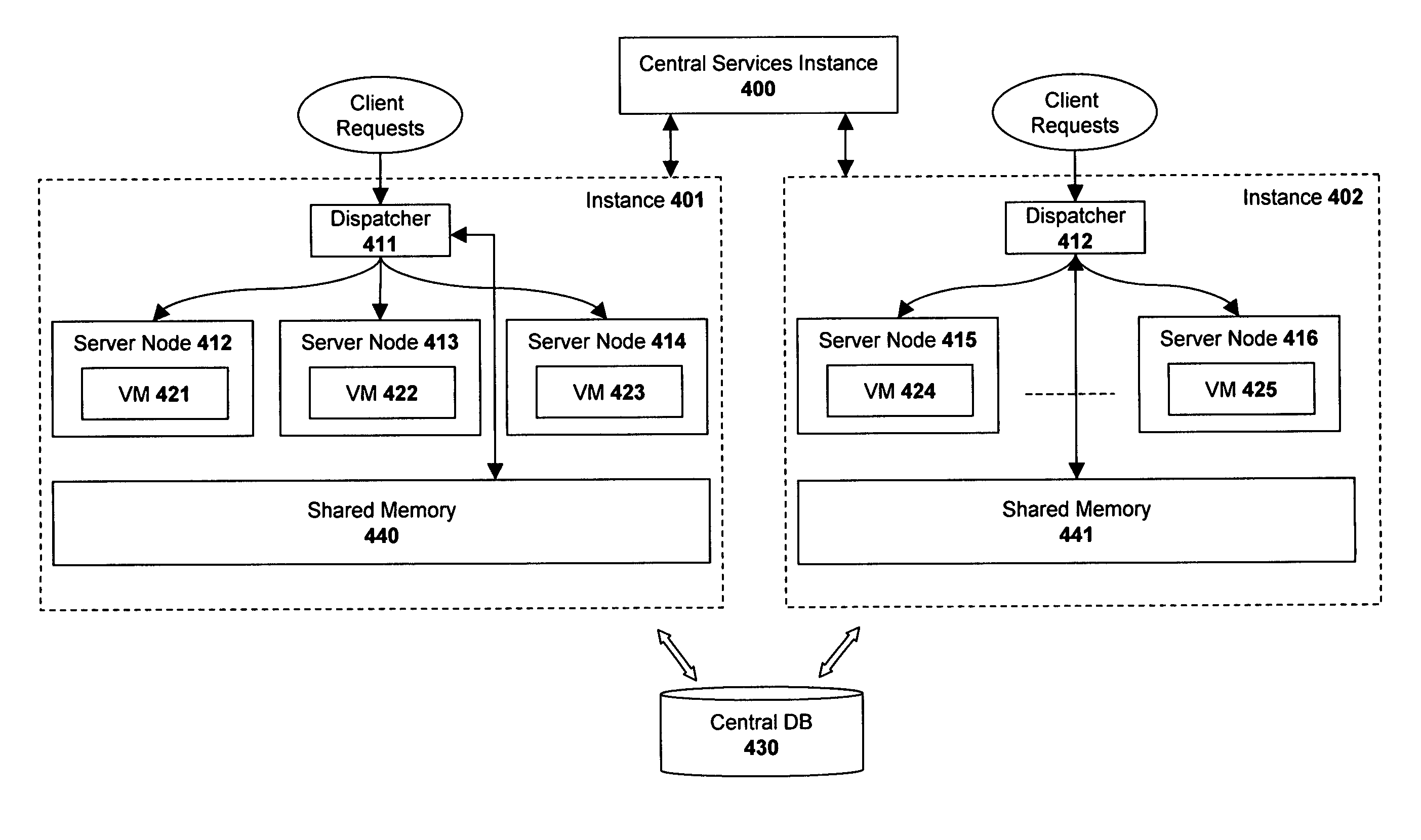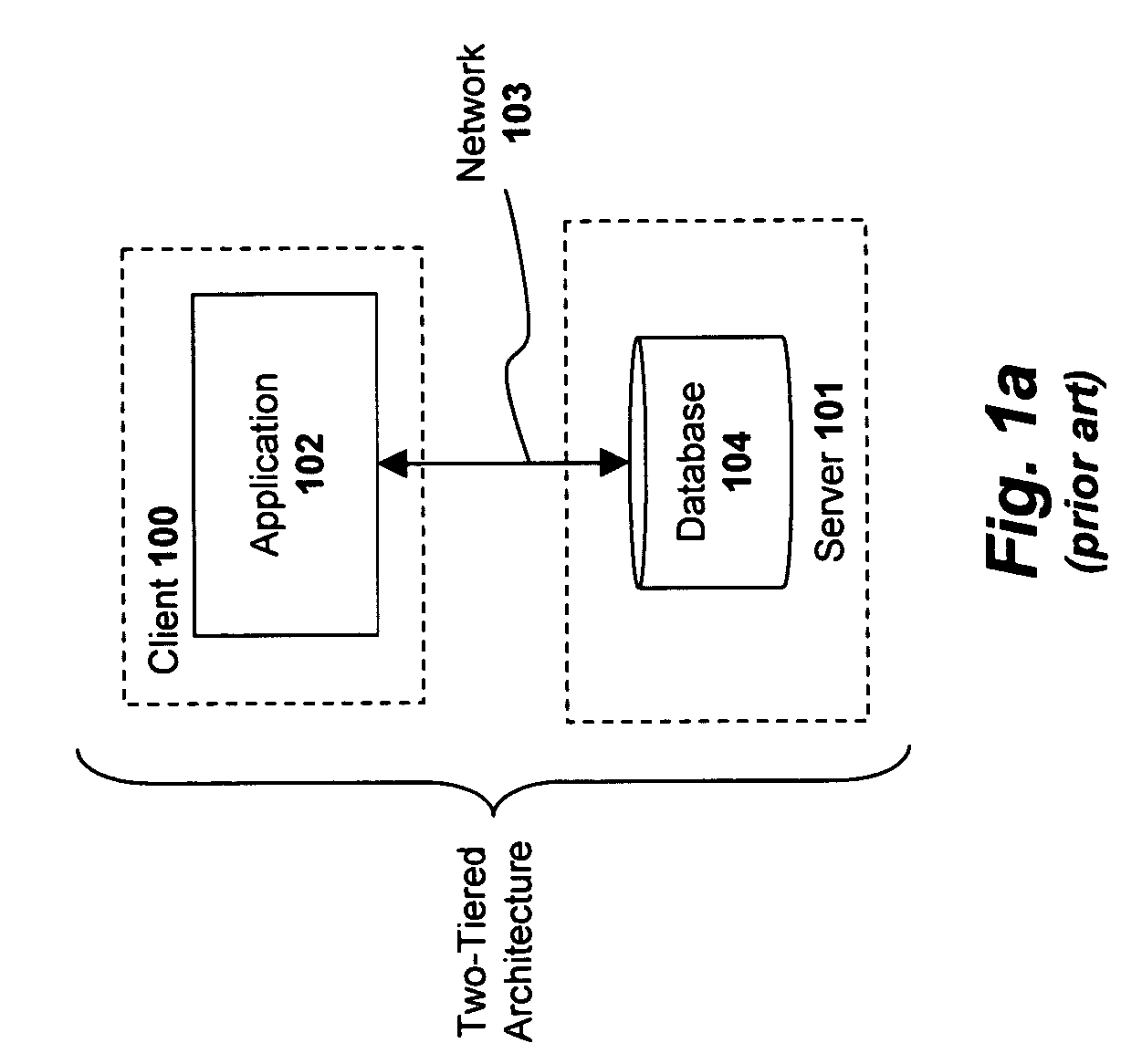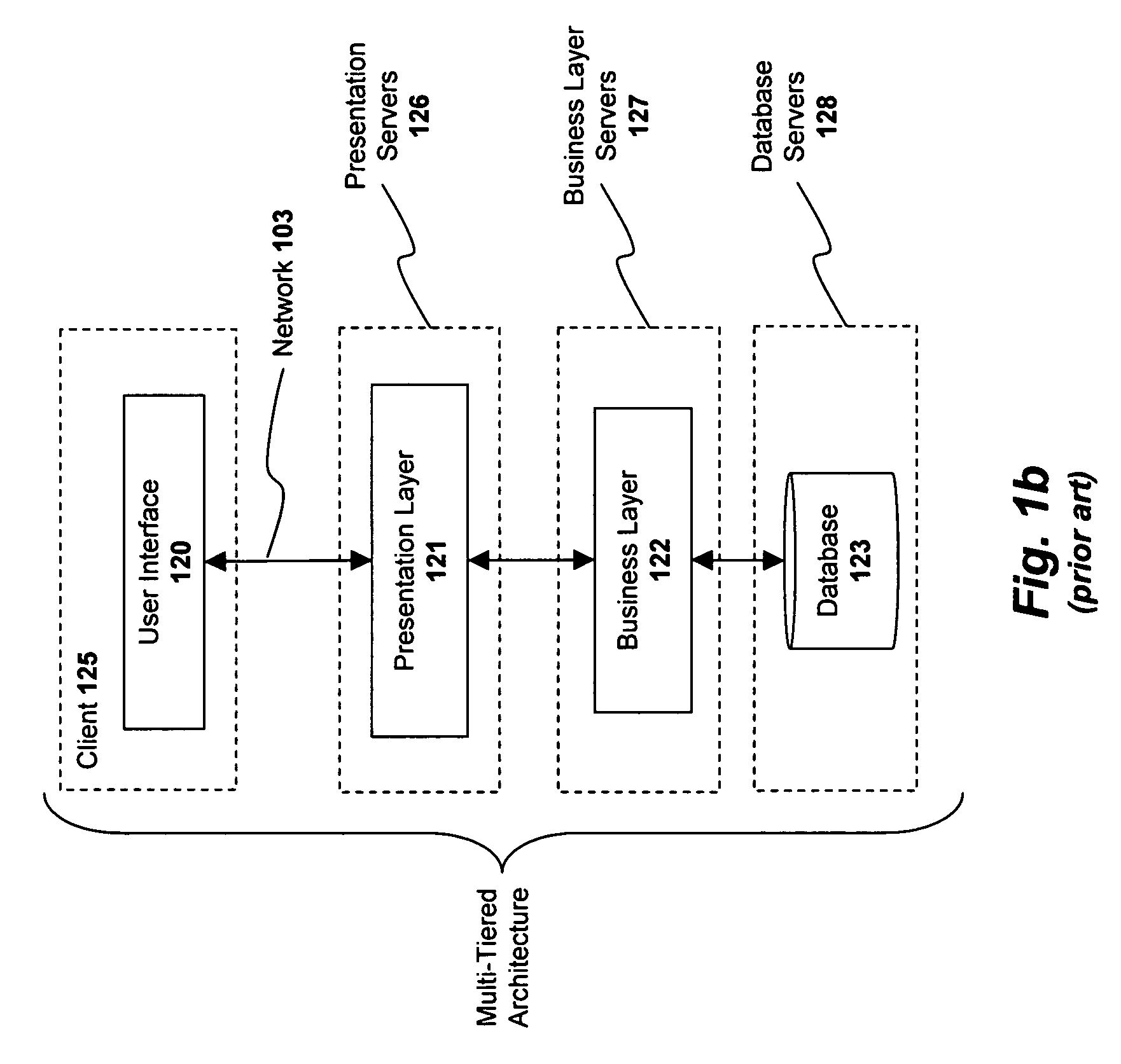System and method for implementing multiple application server clusters using a common binary directory structure
a technology of binary directory structure and application server, applied in the field of data processing systems, can solve the problems of brittle client-side code, difficult task of installing and maintaining up-to-date client-side applications on a large number of different clients, etc., and achieve the effect of simplifying application server managemen
- Summary
- Abstract
- Description
- Claims
- Application Information
AI Technical Summary
Benefits of technology
Problems solved by technology
Method used
Image
Examples
Embodiment Construction
[0030] Described below is a system and method for managing multiple application server clusters using a common binary directory. Throughout the description, for the purposes of explanation, numerous specific details are set forth in order to provide a thorough understanding of the present invention. It will be apparent, however, to one skilled in the art that the present invention may be practiced without some of these specific details. In other instances, well-known structures and devices are shown in block diagram form to avoid obscuring the underlying principles of the present invention.
Introduction
[0031] A. An Exemplary Cluster Architecture
[0032] A system architecture according to one embodiment of the invention is illustrated in FIG. 4. The architecture includes a plurality of application server “instances”401 and 402. The application server instances 401 and 402 each include a group of server nodes 412-414 and 415-416, respectively, and a dispatcher 411 and 412, respectivel...
PUM
 Login to View More
Login to View More Abstract
Description
Claims
Application Information
 Login to View More
Login to View More - R&D
- Intellectual Property
- Life Sciences
- Materials
- Tech Scout
- Unparalleled Data Quality
- Higher Quality Content
- 60% Fewer Hallucinations
Browse by: Latest US Patents, China's latest patents, Technical Efficacy Thesaurus, Application Domain, Technology Topic, Popular Technical Reports.
© 2025 PatSnap. All rights reserved.Legal|Privacy policy|Modern Slavery Act Transparency Statement|Sitemap|About US| Contact US: help@patsnap.com



